The Thermal Data
Moving on from the restriction test bench the HPC was loaded into the thermal test chamber for a series of tests – consisting of 3 flow rates, each having 3 different fan rpm rates tested. I felt the thermal test data was most important and which you as the reader would be most interested in.
Below is the final data results gathered from at least 2 data logging runs at each flow rate and fan rpm combination. The most stable 15 minute period from each logging run was used and then averaged with the other runs to obtain the data for the table below. A total of 16 temperature sensors were used in the thermal test chamber (8 air in, 2 air out, 3 water in, 3 water out) each take a reading every second and logged via a CrystalFontz unit. The data in the table below is the averaged results of the logging runs which has then been used to create all the plots and tables there-after.
The performance metric of critical importance is the delta between the warm coolant temperature in and the cold ambient air temperature in to the radiator. Given that the system is well insulated and in equilibrium and we know the heat input to the system then we can also calculate a very important number – that is the amount of power required to raise the coolant temperature 1C (or 10C which is more useful reference point).
Let’s take a look at the Delta T results from the tests, in bar chart form first…
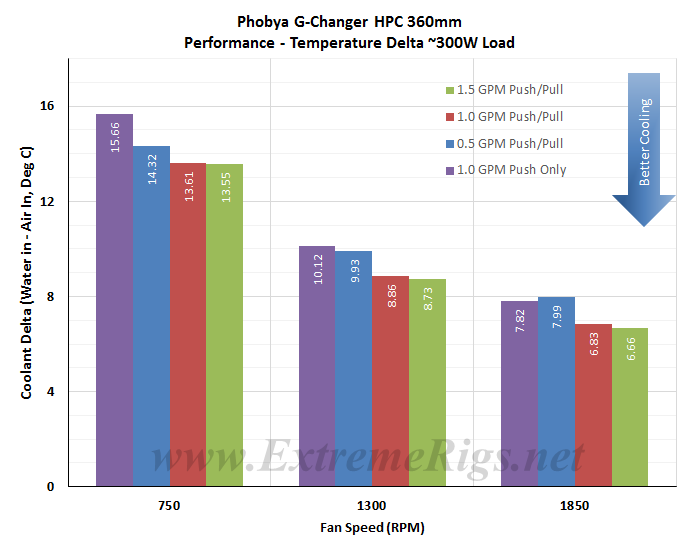 I was not too concerned about the actual delta numbers, more so the trend pattern. As we have seen in many of the low PFI rads the variance between medium and high speed fan at each flow rate is minimal. Also showing up is the performance hit on results for the low flow rate. While the numbers and trend pattern seem a bit strange at first glance you have to remember that the pump power also changes for each flow rate which changes the total power dissipated by the radiator. Things will be clearer once we factor in the total power dissipation.
I was not too concerned about the actual delta numbers, more so the trend pattern. As we have seen in many of the low PFI rads the variance between medium and high speed fan at each flow rate is minimal. Also showing up is the performance hit on results for the low flow rate. While the numbers and trend pattern seem a bit strange at first glance you have to remember that the pump power also changes for each flow rate which changes the total power dissipated by the radiator. Things will be clearer once we factor in the total power dissipation.
To really analyze this data though we have to look at how much power was being dissipated in each case to really compare in an “apples to apples” fashion.
Delta T results (as above) are not always helpful when thinking about how many radiators you would need to cool your system. Instead it’s more useful to know the delta/W, or more usefully, the inverse metric of W/delta C. The metric plotted below tells us how many watts are dissipated by the radiator when the coolant rises 10C above ambient temperatures. (W/10 Delta T):
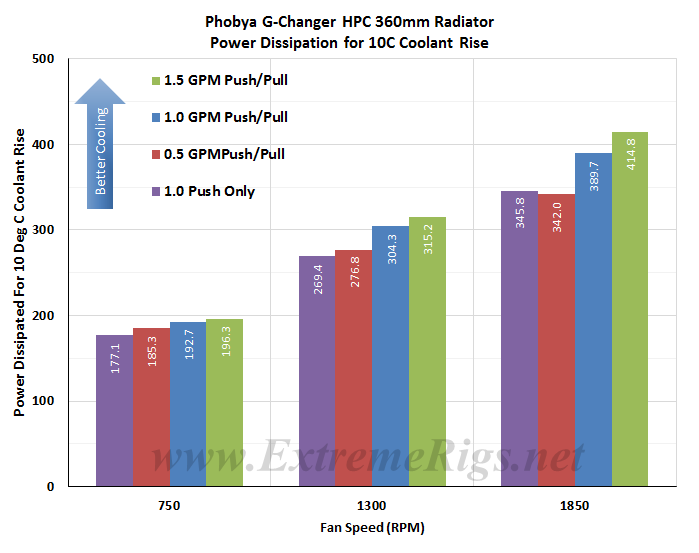 As expected increasing airflow through the radiator is the primary determinant in changing the radiators performance. However, we can clearly see that the low flow rate of 0.5 gpm has a negative effect on cooling performance. So much so that a Push Only fan set up at 1.0 GPM outperforms a Push/Pull set up at 0.5 gpm with high speed fans.
As expected increasing airflow through the radiator is the primary determinant in changing the radiators performance. However, we can clearly see that the low flow rate of 0.5 gpm has a negative effect on cooling performance. So much so that a Push Only fan set up at 1.0 GPM outperforms a Push/Pull set up at 0.5 gpm with high speed fans.
This data can now be plotted as a pretty curve so that an end user can interpolate their own fan speed. Note again that the extrapolation of the curve is much more sensitive to error than in between the tested range.
Let’s exclude the push data for now and come back to it:
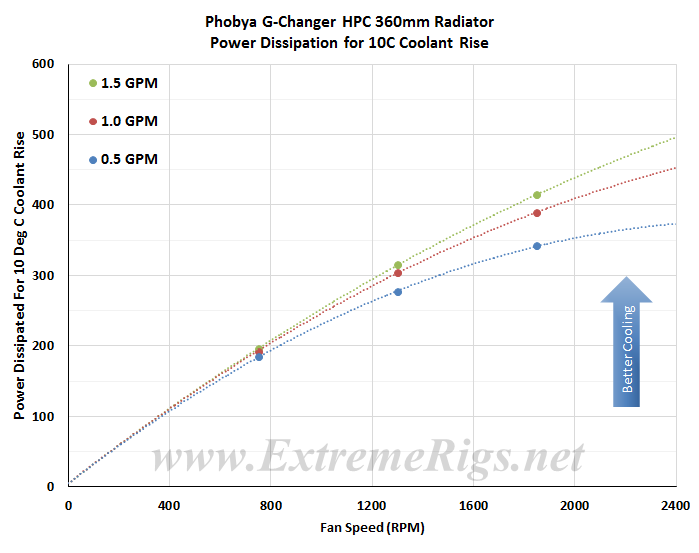 This plot makes it easier to see that at higher fan speeds a low flow rate starts to impact the cooling performance. This makes sense if you take it to the extreme and think about a very low flow rate where the coolant is already cooled 99% of the way to ambient with 10% of its journey through the radiator. In this example the radiator is not being efficiently used. 90% of the radiator surface area would then be wasted and you could have used a smaller radiator. Both coolant flow and air flow can limit thermal performance, however in typical systems coolant flow has a much weaker effect than airflow due to typical choices of fans and pumps.
This plot makes it easier to see that at higher fan speeds a low flow rate starts to impact the cooling performance. This makes sense if you take it to the extreme and think about a very low flow rate where the coolant is already cooled 99% of the way to ambient with 10% of its journey through the radiator. In this example the radiator is not being efficiently used. 90% of the radiator surface area would then be wasted and you could have used a smaller radiator. Both coolant flow and air flow can limit thermal performance, however in typical systems coolant flow has a much weaker effect than airflow due to typical choices of fans and pumps.
If we now come back to the push data it’s good to compare only the push to push/pull data in an “apples to apples” fashion by only looking at the 1GPM data:
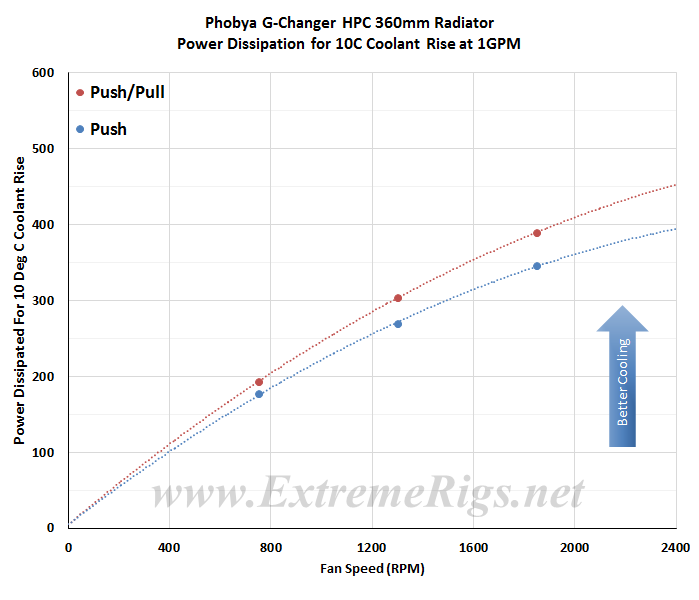 Push Only gives around 90% (averaged) of the performance of the Push/Pull 1.0 gpm test results on this radiator.
Push Only gives around 90% (averaged) of the performance of the Push/Pull 1.0 gpm test results on this radiator.
Having said all of this about flow effects, they are in reality small. So in this next plot all three Push/Pull results at each flow rate were averaged to produce one curve. Averaging reduces test error so this helps further to be sure of our data and is more useful therefore for comparing to other radiators.
Here we compared the HPC results against one of the best and worst performers from the first test group and for extra interest added the Watercool HTSF2 for comparison.
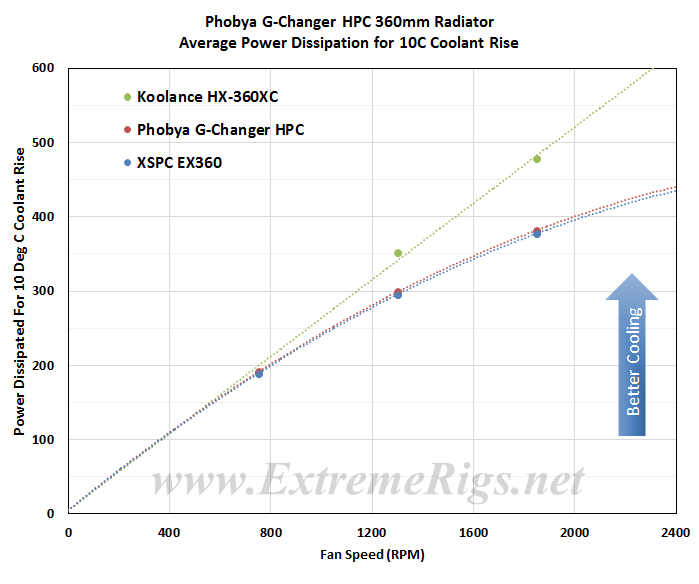 As you can see the HPC is only marginally better than the worst performer from Group 1 and that it is beaten by the Watercool HTSF2 which has an additional 1 FPI on a core which is otherwise the same as the HPC.
As you can see the HPC is only marginally better than the worst performer from Group 1 and that it is beaten by the Watercool HTSF2 which has an additional 1 FPI on a core which is otherwise the same as the HPC.
Now let’s analyze that data some more…







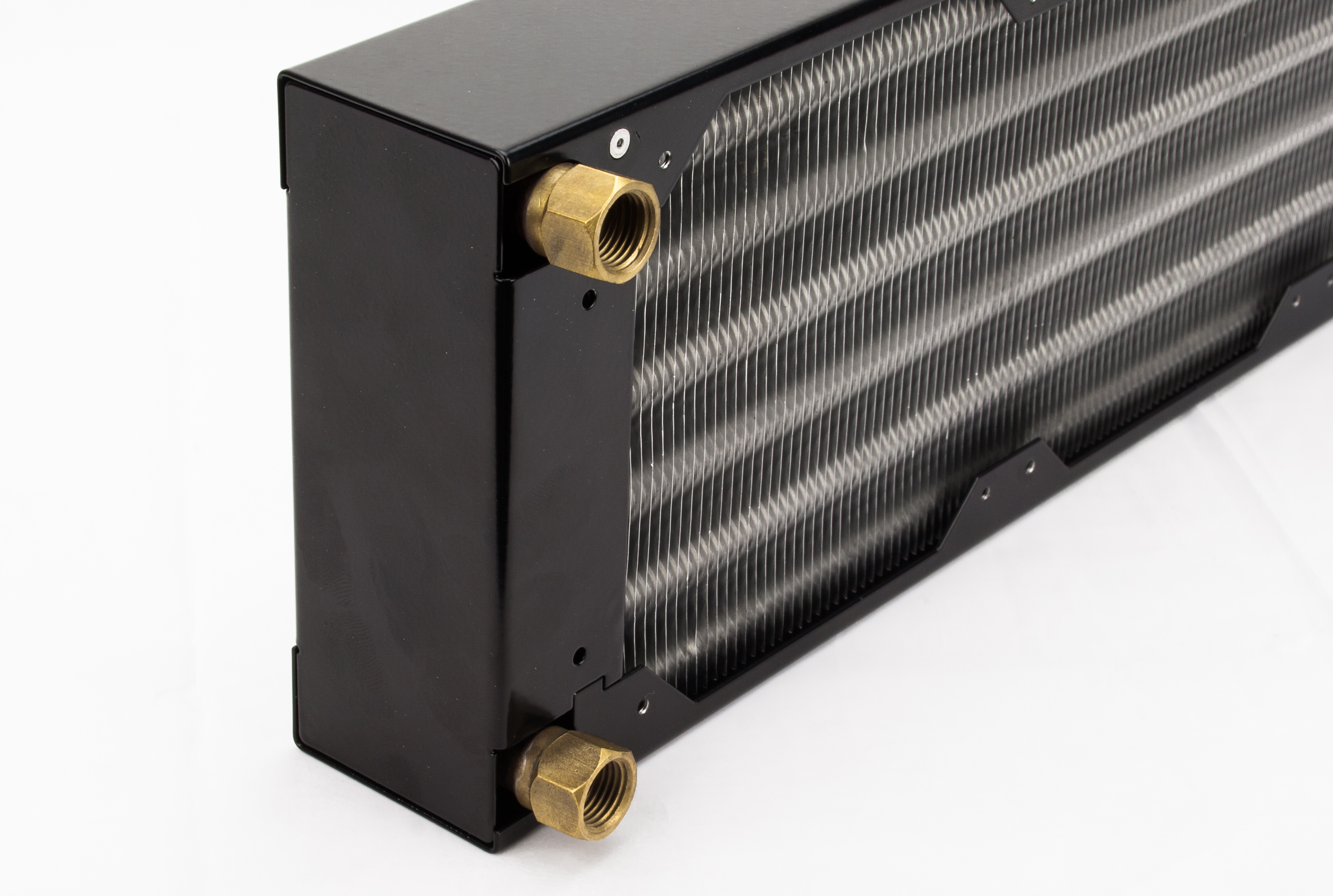
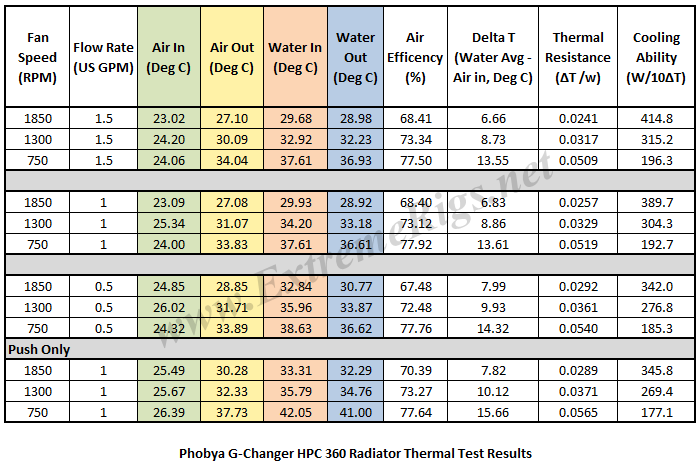




[…] Koolance HX-360XC 360 Radiator Magicool G2 Slim 360 Radiator Mayhem’s Havoc 360 Radiator Phobya G-Changer HPC 360 Radiator Phobya G-Changer V2 Full Copper 360 Radiator Watercool HTSF2 3×120 LT 360 Radiator XSPC EX 360 […]
Comments are closed.